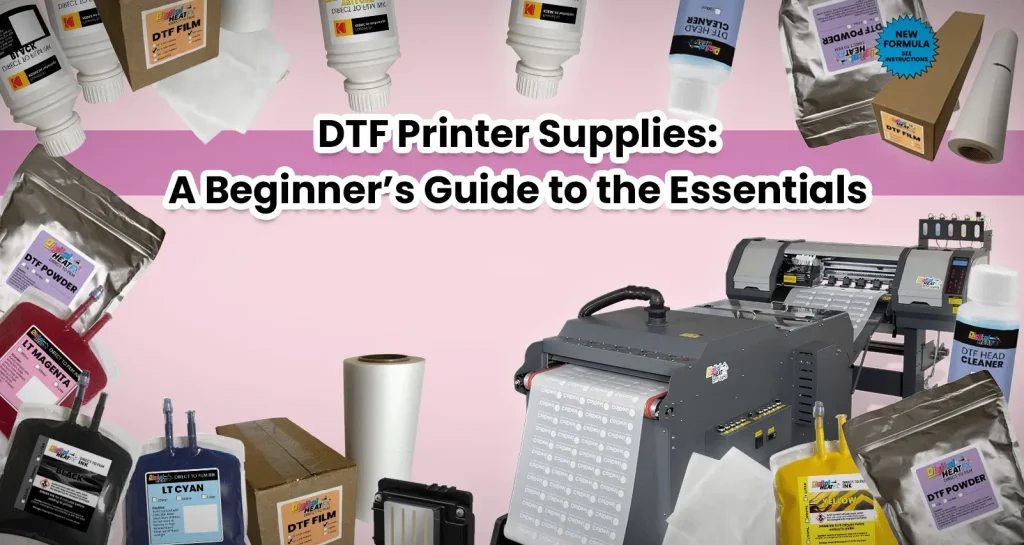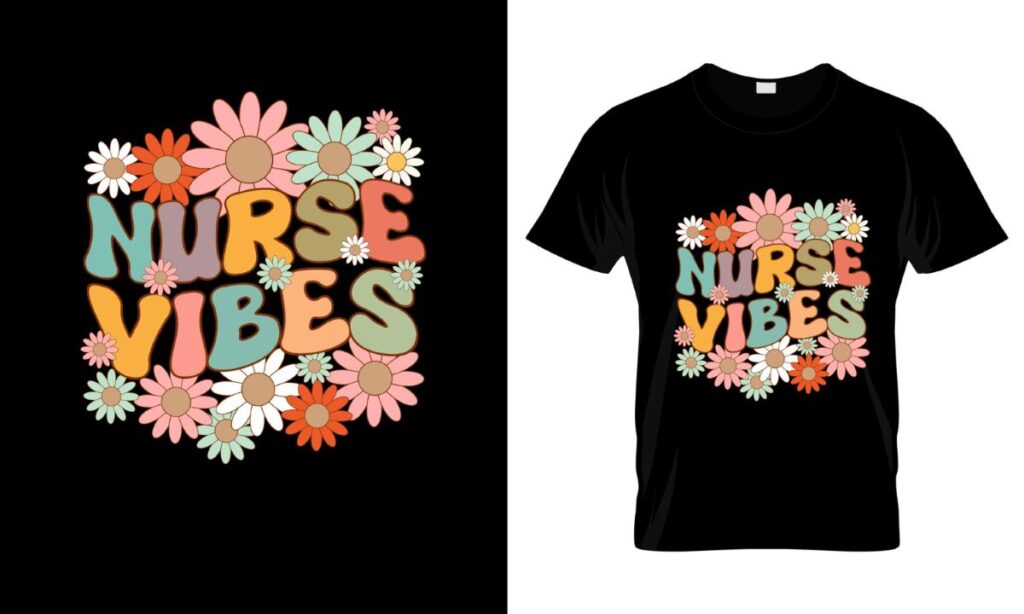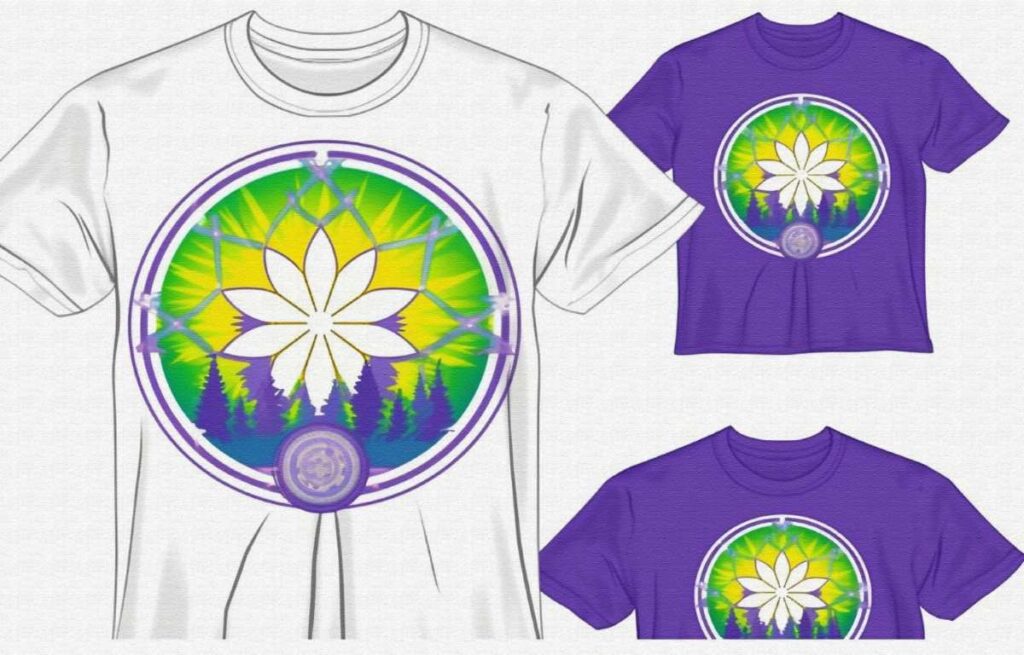DTF Supplies are pivotal in achieving mesmerizing prints that capture attention and stand out in any market. With the rise of Direct to Film (DTF) printing, it’s essential for businesses and hobbyists alike to make informed decisions about the best DTF supplies available. Selecting high-quality DTF printing inks, reliable DTF transfer films, and effective DTF adhesive powder is crucial for ensuring vibrant colors and durability. Moreover, utilizing a heat press designed specifically for DTF will enhance the overall results, providing a seamless transfer experience. This guide delves into the necessary factors involved in choosing the right DTF supplies to elevate your printing projects.
When embarking on your DTF printing journey, understanding the essentials of Direct to Film materials is vital. Comprehensive knowledge of UHD film, specialized transfer inks, and premium adhesive powders can significantly impact your print quality. Selecting a dependable heat application device is also critical, as it ensures that prints adhere correctly and maintain their vibrancy over time. In this article, we will explore the integral components necessary for successful DTF printing and help you identify the optimal materials that best fit your creative needs.
Understanding DTF Printing Inks
In the realm of DTF printing, inks are one of the cornerstone components that directly influence the quality and vibrancy of printed results. When selecting DTF printing inks, model compatibility and color fidelity should be high on your priority list. Brands such as Neenah and Epson have established themselves as industry leaders, providing inks that promise excellent color vibrancy and adherence across various substrates. Choosing inks formulated specifically for DTF applications ensures not only rich colors but also enhanced durability that withstands multiple washes, making your designs last longer.
Moreover, it’s essential to consider the type of pigments used in these inks. Water-based inks are popular in the DTF community for their environmental friendliness and ease of use, while UV inks offer superior color and durability. Understanding the characteristics of the inks, such as fade resistance and pigment concentration, will help you make an informed decision that aligns with your printing objectives, ensuring that your final products maintain their integrity over time.
Choosing the Right DTF Transfer Film
The selection of transfer film plays a pivotal role in DTF printing, influencing how well the ink adheres to the fabric and the overall quality of the prints. High-density recovery films are often preferred, as they facilitate better ink transfer, resulting in clearer and more vibrant prints. Leading brands like Mimaki and BQ Films have established a reputation for their exceptional quality, helping printers achieve optimal results while minimizing defects during the transfer process.
When choosing DTF transfer films, it’s crucial to consider the specific fabric types you will be working with. Different films may perform better on various substrates, and understanding these distinctions helps in selecting the right film for your projects. Additionally, opt for films that are easier to handle and apply as they can significantly streamline your printing process. Investing in high-quality films is essential to ensuring a successful transfer, as inferior films may lead to poor adhesion and unsatisfactory results.
The Role of DTF Adhesive Powder
Adhesive powder serves as a binding agent during the DTF transfer process, ensuring that the ink adheres effectively to the fabric. Utilizing the right type of adhesive powder designed for DTF applications is undoubtedly crucial for the success of your prints. Many users rave about brands like Aosung, which offer powders that enhance the quality and longevity of the final output. These powders are specially formulated to not only bind the ink to the fabric but also to withstand washing and other stresses, preserving the image integrity.
Understanding the application techniques for adhesive powder is equally important. Proper distribution of the powder over the ink is necessary to ensure a solid transfer without clumping or uneven results. Familiarizing yourself with the application methods can result in sharp, professional-grade prints. Therefore, investing in high-quality DTF adhesive powders can have a significant impact on the overall appearance and durability of your printed designs.
Evaluating the Quality of DTF Equipment
The quality of equipment used in DTF printing, including the printer and heat press, is fundamental to achieving remarkable results. Printers from reputable brands like Epson and Roland are designed to work seamlessly with DTF processes, providing excellent color accuracy and consistent output. These printers often come equipped with advanced technology to minimize maintenance needs and maximize performance, reducing downtime significantly.
Additionally, a powerful heat press such as the Geo Knight DK20S is essential for properly transferring the print onto the substrate. This equipment allows for adjustable temperature settings and even pressure distribution, which are critical for ensuring that designs transfer correctly without damaging the fabric. Investing in high-quality DTF equipment can elevate your printing game, ensuring that your results stand out in both durability and vibrancy.
The Importance of Substrate Compatibility
When selecting DTF supplies, substrate compatibility cannot be overlooked. It is vital to ensure that your chosen inks, films, and adhesive powders work well with the specific fabrics you plan to print on. Whether you’re working with cotton, polyester, or blended materials, understanding the interactions between these substrates and your DTF supplies can greatly influence print quality and durability.
Different fabrics may require specific settings and parameters in order to achieve optimal results. For instance, the heat settings for polyester may differ from those for cotton. Exploring and testing your chosen materials with various inks and films will help you establish the best combinations, leading to prints that are not only vibrant but also long-lasting. Ensuring substrate compatibility is a key factor that can significantly enhance your overall printing experience.
Balancing Cost and Quality in DTF Supplies
While the option to choose cheaper DTF supplies may seem appealing, it’s essential to weigh cost against quality. High-quality materials often lead to better printing outcomes and lower rejection rates, meaning that investments in superior inks, films, and powders ultimately pay off. Industry experts frequently emphasize that what may seem like a higher upfront cost could result in greater customer satisfaction and fewer returns in the long haul.
Additionally, you’ll need to consider the potential impacts of quality on brand reputation. Poor-quality prints that fade or wash out can tarnish a business’s image, making it imperative to choose supplies that meet high standards. By investing in reliable DTF supplies, businesses not only maximize their output but also enhance their credibility in a competitive market. Hence, a balance between cost and quality should always be considered to achieve sustained success.
Frequently Asked Questions
What are the best DTF supplies for high-quality DTF printing?
The best DTF supplies for high-quality printing include premium DTF inks, high-density transfer films, effective adhesive powders, and high-quality heat presses. Brands like Neenah for inks, Mimaki for films, Aosung for adhesive powders, and Geo Knight for heat presses are highly recommended for optimal results.
How do I choose the right DTF printing inks?
To choose the right DTF printing inks, select options specifically formulated for DTF processes. Look for inks known for their color vibrancy and strong adherence to various substrates; reputable brands include Epson and Neenah, which are lauded for their quality in DTF applications.
Why is the quality of DTF transfer film important?
The quality of DTF transfer film is crucial because it directly affects the ink transfer process and final print quality. High-density recovery films, such as those from brands like Mimaki and BQ Films, ensure better adhesion and vibrant color outcomes, making them essential for successful DTF printing.
What type of heat press is best for DTF printing?
The best heat press for DTF printing should offer adjustable temperature settings and even pressure distribution. Models like the Geo Knight DK20S and other commercial-grade heat presses are recommended as they provide reliable performance necessary for effective print transfers.
How do adhesive powders enhance DTF printing results?
Adhesive powders specifically designed for DTF applications are vital for ensuring the ink adheres well during the transfer process. High-quality powders, such as those from Aosung, significantly improve the durability and vibrancy of prints, leading to superior results overall.
Are there specific compatibility considerations for DTF supplies?
Yes, when choosing DTF supplies, ensure they are compatible with the fabrics you intend to use, such as cotton or polyester blends. Compatibility directly influences print quality and durability, so it’s essential to select supplies that work well with your specific substrates.
| Key Supplies | Importance | Recommended Brands |
|---|---|---|
| Inks | Essential for vibrant colors and adhesion to substrates | Neenah, Epson |
| Transfer Films | Affects color transfer and overall print quality | Mimaki, BQ Films |
| Adhesive Powders | Crucial for ink adherence during transfers | Aosung |
| Quality of Equipment | Ensures consistent and high-quality prints | Epson, Roland, Geo Knight DK20S |
Summary
DTF Supplies are critical in ensuring the success of any Direct to Film printing projects. To achieve exceptional print quality that is vibrant and durable, selecting the right supplies tailored to your specific printing needs is necessary. From high-quality inks that deliver color richness to compatible transfer films that enhance the final output, every component plays a vital role in the printing process. Moreover, utilizing reliable adhesive powders and investing in top-grade equipment further contributes to excellent results. By thoughtfully considering each aspect of your DTF supplies, you position yourself to not only meet but exceed printing expectations, leading to increased customer satisfaction and potential business growth.



